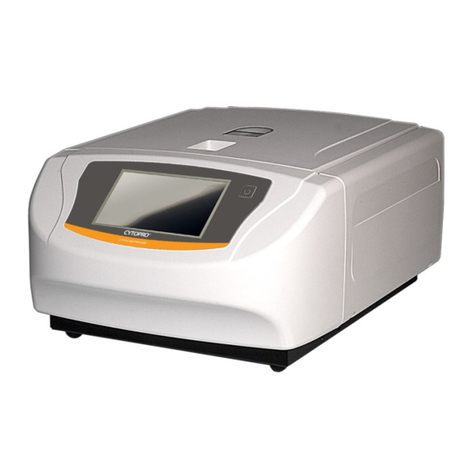Table of Contents
Section 1
Introduction
1.1 Aerospray TB Stainer Overview...................................................... 7
Using this Manual................................................................. 7
Functional Description ......................................................... 8
Key Features......................................................................... 9
Intended Use ........................................................................ 9
Table 1: General Specifications............................................. 10
Table 2: Performance Specifications..................................... 11
Table 3: Carousel and Rotor Information ............................. 12
Table 4: Explanation of Symbols........................................... 13
1.2 Instrument Description .................................................................. 15
Figure 1: Front and Right Side Panels................................... 15
Figure 2: Front Panel and Touchscreen ................................ 16
Figure 3: Rear Panel ............................................................. 16
Figure 4: Stainer Bowl Components...................................... 17
Figure 5: Nozzle Diagram ..................................................... 17
Table 5: Preventive Maintenance Kit.................................... 18
Barcode Reader .................................................................... 19
Figure 6: Barcode Reader ..................................................... 19
Other Needed Items............................................................. 19
1.3 Touchscreen and User Interface .................................................... 20
Table 6: Front Panel/Main Screen Function Keys ................. 20
Table 7: System Setup Keys .................................................. 21
Table 8: Maintenance Function Keys.................................... 23
Section 2
Setup and Preparation for Operation
2.1 Instrument Setup ........................................................................... 24
Unpacking and Installing the Stainer.................................... 24
Connecting the Drain Tube and Waste Container................ 25
Connecting Power ................................................................ 25
Installing Standard 500 mL Reagent Bottles......................... 26
Installing the 5 Liter Reagent Bottle ..................................... 28
Installing the Barcode Reader .............................................. 28
2.2 Preparing the Stainer for Operation............................................... 29
Priming Procedures .............................................................. 29
The Clean Cycle .................................................................... 31
Performing Tests .................................................................. 31
Reagent Level Monitoring .................................................... 32
Enabling/Disabling Reagent Level Detect....................... 32
Zeroing the Reagent Level Sensors ................................. 33
Section 3
Controlling and Customizing Stainer Functions
3.1 System Setup Menu ....................................................................... 35
Accessing the System Setup Menu....................................... 35
Creating a Stain Program...................................................... 35
Editing a Stain Program or Adjusting Stain Settings ............. 36
Adjusting Stain Settings........................................................ 36
Changing the Program Name ......................................... 36
Administrator and User Accounts ........................................ 37
Creating an Administrator Account................................ 37
Creating User Accounts .................................................. 37
Managing User Access ................................................... 37
User Login/Logout .......................................................... 38

























